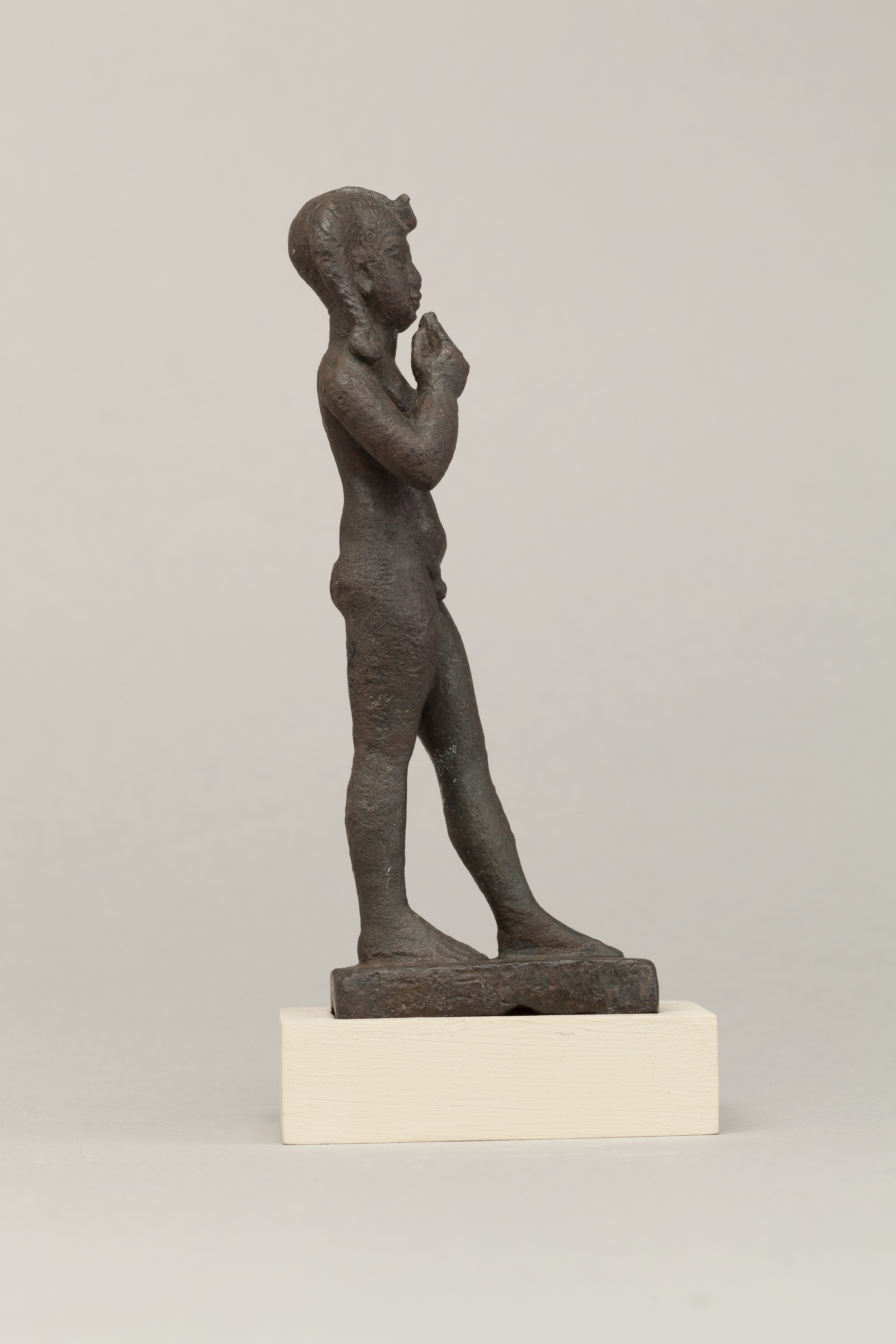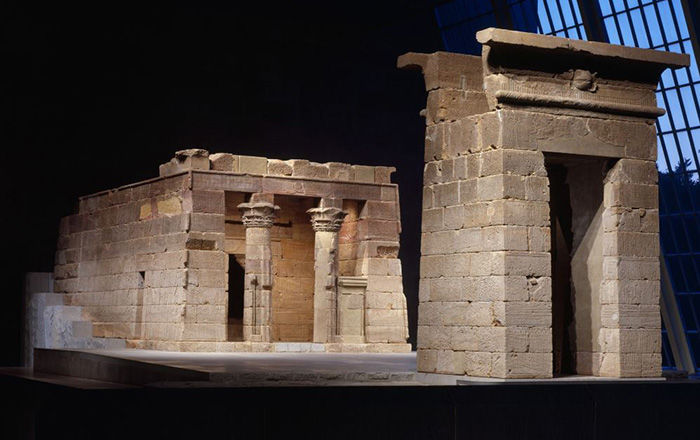Statuette of a child god
Late Period–Ptolemaic Period
Not on view
The figure represents a child god in a standing/striding position, wearing a cap and uraeus. Incised circles decorate the cap and a streamer falls from its bottom edge down the back of the neck. The child god is distinguished from adult gods by a range of iconographic clues: his nudity, the finger raised to the mouth (a child-like gesture), and the thick sidelock on the right side of his head. An amulet hangs on the chest, a common feature for child gods. Meanwhile, his plump, well-fed belly showcases his ability to bring about prosperity and abundance. The base had an inscription, but it is now eroded and illegible.
Child gods grew in popularity and cult from the Third Intermediate Period onwards, rivaling even the most powerful and ancient gods, especially as temple offerings. The best known is Horus the Child (Harpokrates), who was the son of Isis and Osiris, but many others existed, including Khonsu the Child, Ihy, and Harsiese, among others. Thus it is difficult to assign a precise identity to this statuette without an associated inscription.
This image cannot be enlarged, viewed at full screen, or downloaded.
This artwork is meant to be viewed from right to left. Scroll left to view more.





